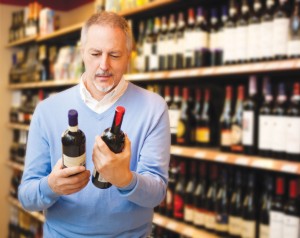When in Doubt
Story by Amanda Carbonell, owner of Uncorked by the Sea Wine Shop and Gallery
602 N. Howe St., Southport
(910) 454-0633
www.uncorkedbythesea.com
Choosing a wine doesn’t have to be a daunting task, even if you’re not sure what the difference is between Shiraz, Sirah, Bordeaux or Pinot Noir. Don’t think you’re stuck with just picking a wine based on its clever label. Sometimes, you may get lucky and pick a good one, but lots of times, especially with budget wines, the label graphics are a lot more pleasing than what is in the bottle.
 We, of course, encourage you to develop a relationship with a local wine shop where the staff can get to know your tastes and make recommendations that will likely be spot on. So when in doubt, ask your “wine guy,” or you can also consult a wine app on your smart phone.
We, of course, encourage you to develop a relationship with a local wine shop where the staff can get to know your tastes and make recommendations that will likely be spot on. So when in doubt, ask your “wine guy,” or you can also consult a wine app on your smart phone.
What do you like?
There is no right or wrong way to choose a wine. Sharing your preferences with a knowledgeable wine professional will help them move you in the right direction. A good start is to give some thought to what you really like in a wine.
Is your favorite white crisp and citrusy or buttery and oaky? When you think of white wines, think of white or lighter-fleshed fruit. The most common scents and flavors that you can expect in white wine varietals include: apple, pear, citrus, tropical, peach, apricot, melon, kiwi, banana, mango, pineapple, warm florals or butter. Whether the wine is stored in oak barrels or stainless steel tanks will also have a significant impact on its flavor profile. In general, you’ll notice more acidity on the palate with white wines. You will usually be better off choosing a more recent vintage except in the case of the most expensive whites.
Prefer a fruity, full-bodied red? Just as you considered lighter fruits with white wines, you’ll want to shift to darker fruit for red-wine profiles. The most common scents and flavors for red wine varietals include: cherry, cranberry, raspberry, strawberry, blackberry, blueberry, plum, raisin, fig and various floral tones or spices. You’ll often notice more tannins in the red-wine category. That is why older vintages are smoother and silkier, demanding a higher price point than young reds.
It’s no secret that climate affects every vintage, every year, but it also plays a critical role in the development of the individual grape clusters and their innate flavor profiles. For example, a wine’s style will be completely different depending on where it was grown. Take a Cabernet Sauvignon for example—one grown in a cooler region and one grown in a warm, sunny locale. What happens to the grapes? In the cooler areas the Cab grapes will often display tart, tight flavors like that of red cherries or currants. However, grapes grown in warmer climates present juicier fruit, like that of plums, strawberries, raspberries and blackberries, as a direct result of ripeness levels based on sun exposure.
How much should you spend?
Next, think about your budget. A good starting point is around $20. For instance, ask for a recommendation and listen to why it would be a good choice. Uncomfortable with the price? Ask for one that is similar in taste but priced less. Or if you want to up your game, ask what would be the next level up for that varietal or region.
Wine Apps
When you’re on your own staring at the grocery aisle, just pull out your smart phone for some guidance. There are several wine apps available. Vivino is the most popular with more than 5 million users. Just download the free Vivino app for your iPhone, Android or Windows phone, and you’re ready to take a picture of any wine label. Within a minute, Vivino will match it against a database of more than 500,000 wines. It provides notes and rankings from others who have had the wine plus information about the winery, the grape, the wine region, pairing suggestions and much more. You will be able to add your own notes and ratings and even create a social network with your friends and follow other users.
When are you serving the wine?
This is one of the most important factors in making your decision. Is it for sipping on the deck or for a romantic dinner for two? Occasion should certainly drive your selection. What is appropriate for cocktails at sunset may not work for the dinner your significant other has worked on all day. Wine should complement both the food and the mood.
-

By: Amanda Carbonell
Southport Magazine contributor
-

-

Discover the Road Less Traveled
Wine from Down Under
Tasting South Africa
Summer Wines and Sangria
How Much is Enough?
This site uses Akismet to reduce spam. Learn how your comment data is processed.










Leave a Reply